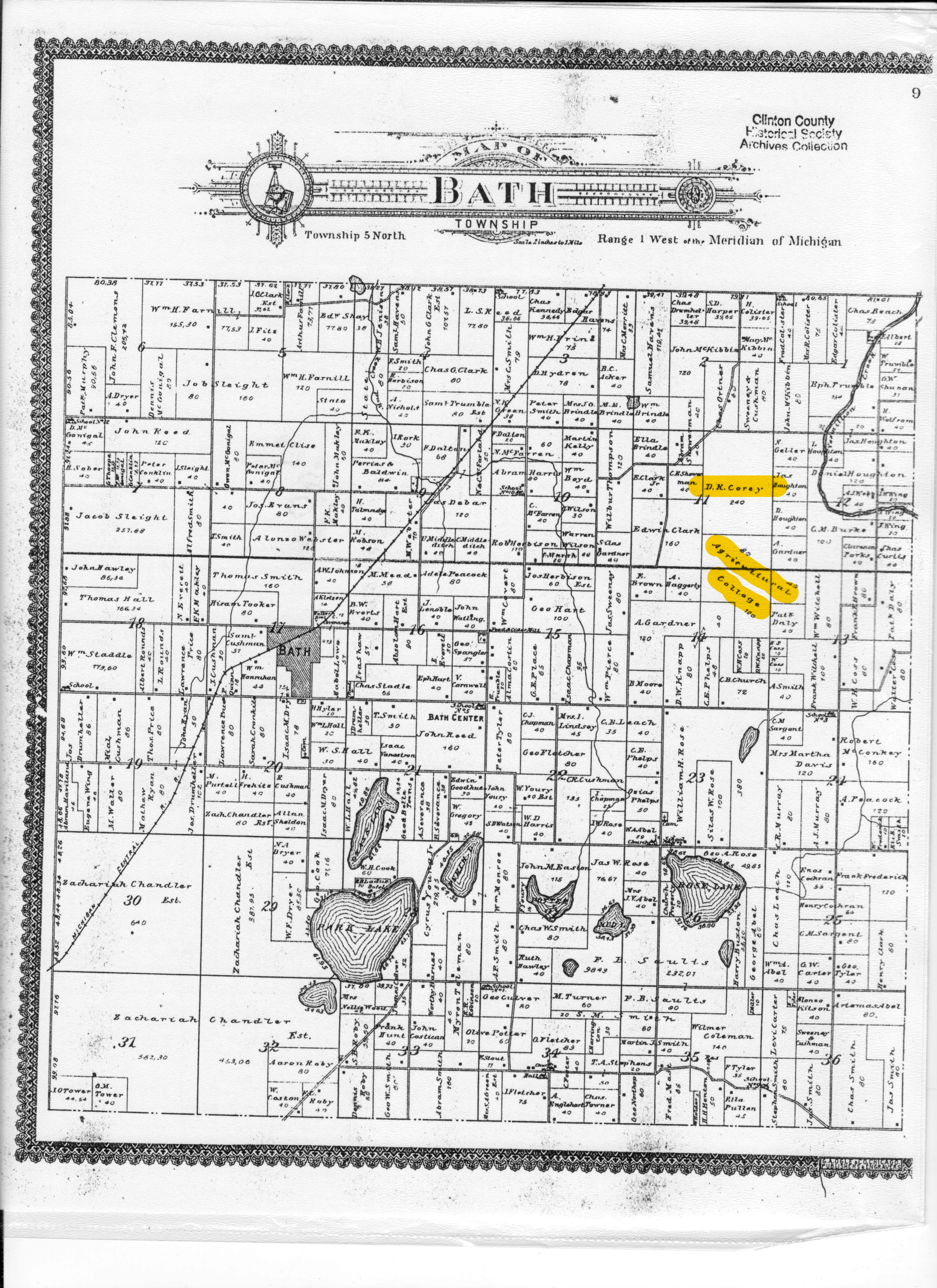History of CMERC
On November 28, 2018, the ribbon was cut: the Corey Marsh Ecological Research Center officially opened. In April 2018, MSU AgBioResearch had begun the process of repurposing the former Muck Soils Research Farm into the Corey Marsh Ecological Research Center, their 14th off-campus research center in the state. Known affectionately as CMERC (pronounced see-murk), the 440-acre property is a haven for research, restoration, outreach, and community engagement located just 20 minutes from MSU’s campus.
1855: Michigan Governor Kinsley S. Bingham approves Public Act No. 130, an act for the establishment of a state agricultural school, to be known as the Agricultural College of the State of Michigan. In 1857, classes begin at the Agricultural College with 57 male students.

1858: The Michigan Legislature approves Act No. 31, which reserves the swamp lands in the four adjacent townships for the use of the College. This act added 6800 acres to the 676 previously owned by the College. The editor of the Michigan Farmer writes: ''We do not see why the Institution [College] with the great facilities this tract will afford…may not at no very distant day embrace one thousand students.”
1870: The State Agricultural College begins accepting women students.
Dec. 24, 1889: David Ralston Corey purchases 240 acres adjacent to MSU’s Bath Township property from the Agricultural College. He owns the land until July 8, 1911. Corey was born in 1841 in Ontonagon, MI, and was a lawyer by profession, at one point partnering with his brother-in-law at the firm Sunderlin and Corey in Hubbardston, MI. Corey also served in the 13th Michigan Volunteer Infantry in the Civil War from 1862 to 1865. He died aged 76 in 1917, and is buried at Mount Hope Cemetery in Lansing, MI.
Today, Corey Marsh is a local landmark in Clinton County that covers the western portion of MSU’s Bath Township property and also extends further north. It appears likely that the marsh has been known colloquially as Corey Marsh since Corey’s ownership of the adjacent property in the late 1800s. The name Corey Marsh has been federally recognized by the U.S. Geological Survey since 1980.
1919: The Muck Farmers Association is founded.
1921: Paul Harmer arrives at MSC as Research Associate and Extension Specialist in Soil Science. During his 32-year tenure, Harmer conducted research, advocated for muck soils farming and served as the permanent secretary of the Michigan Muck Farmers Association (MMFA).
1941: The Muck Soils Research Center is established on the Michigan State University’s Bath Township property. Interest was growing in the four million or more acres of muck land in Michigan, and the State Board of Agriculture approved $5,000 to be used in starting a new experimental muck farm. Corey Marsh was a natural choice for the location of this new experimental muck farm, as Ernest Anthony, the Dean of Agriculture, describes in his address to the 23rd annual MMFA convention: “Fortunately the College has had in its possession since 1855 over 200 acres of undeveloped, excellent muck land, located in the Corey Marsh near Bath in Clinton County. The land is the last of the original grant of land made when the College was first established. It is located in a larger body of excellent muck of better than 1,000 acres which forms the Corey Marsh. It is quite uniform in character, running from four to twenty feet in depth, with a large proportion more than twelve feet deep, and it can be drained without difficulty."
Early developments included clearing twenty-five acres of light brush cover, installing a pumping station, and establishing electric power. Arrangements were made to tile drain at least twenty-five acres that year, with more to be cleared and tiled as needed. An improved road was constructed to the center of the operations. It was also planned to build a house for the farm foreman and necessary tool sheds and other buildings to house the equipment. The initial 25 acres were broken and fallowed in spring 1941, and experiments began in 1942.
1964: After several name changes, the College finalizes its name to Michigan State University.
2012: The Muck Soils Research Farm closes after 70 years of agricultural research.
2018: The Bath Township property is renamed Corey Marsh Ecological Research Center (CMERC).



 Print
Print Email
Email